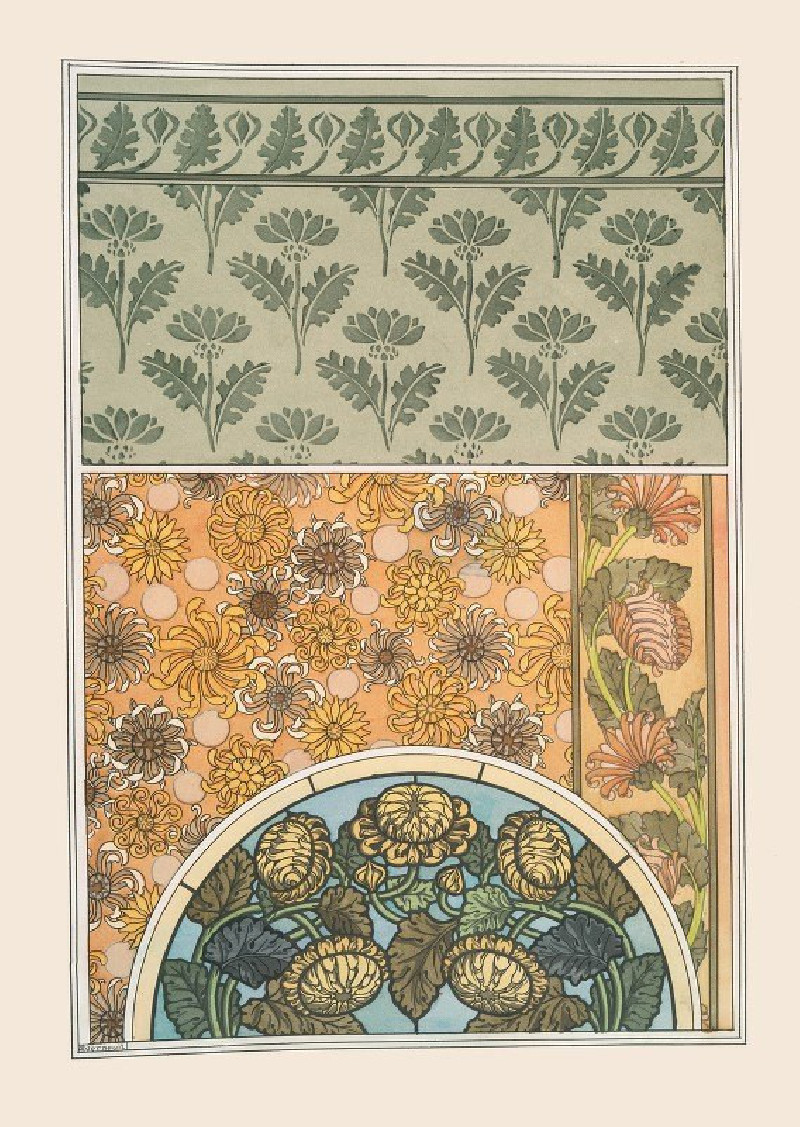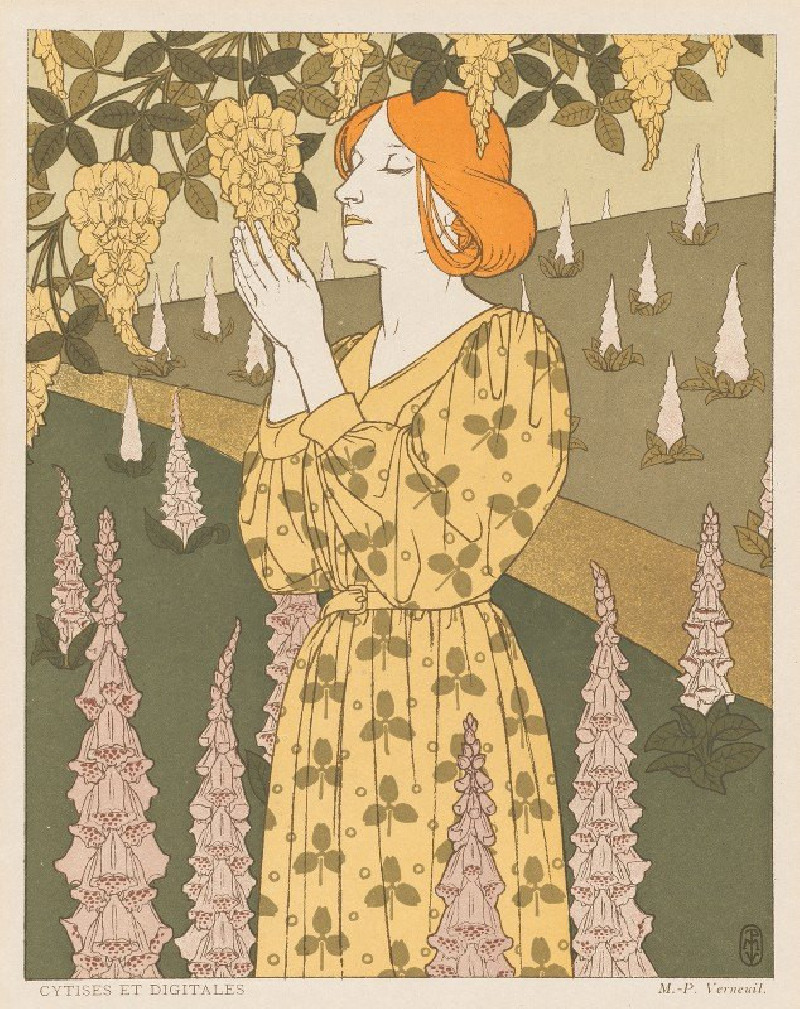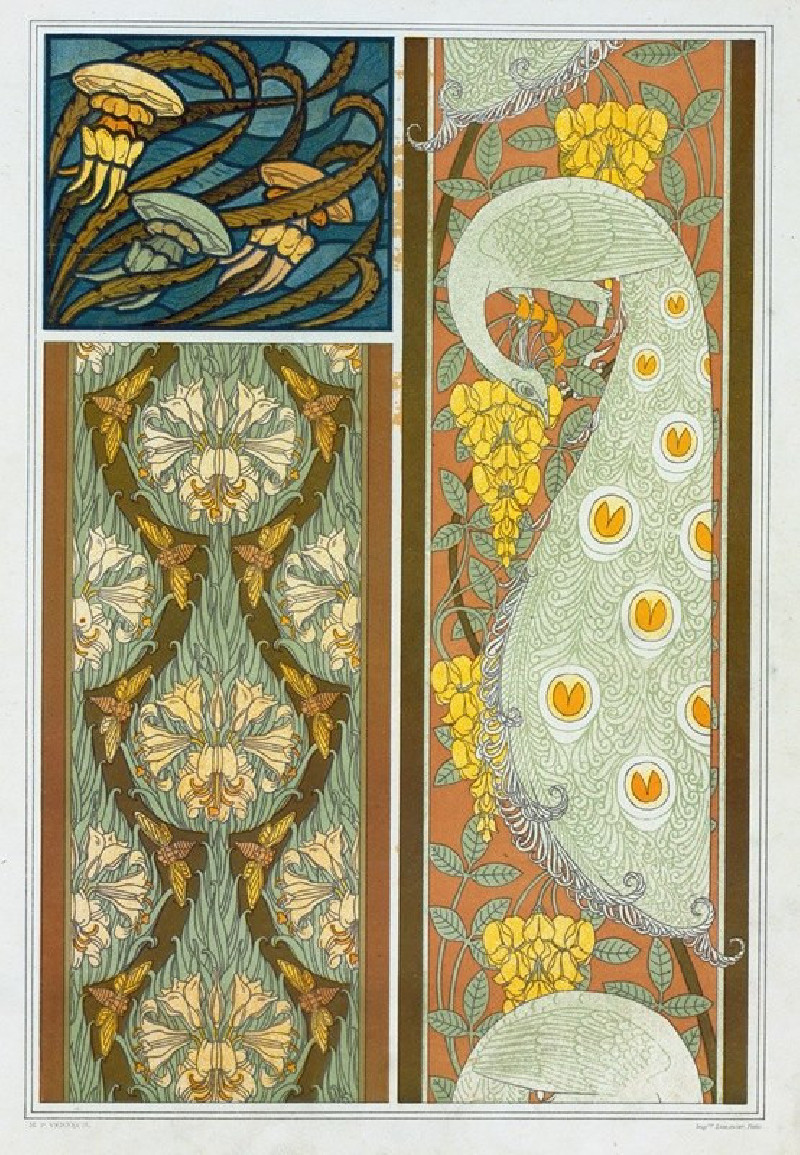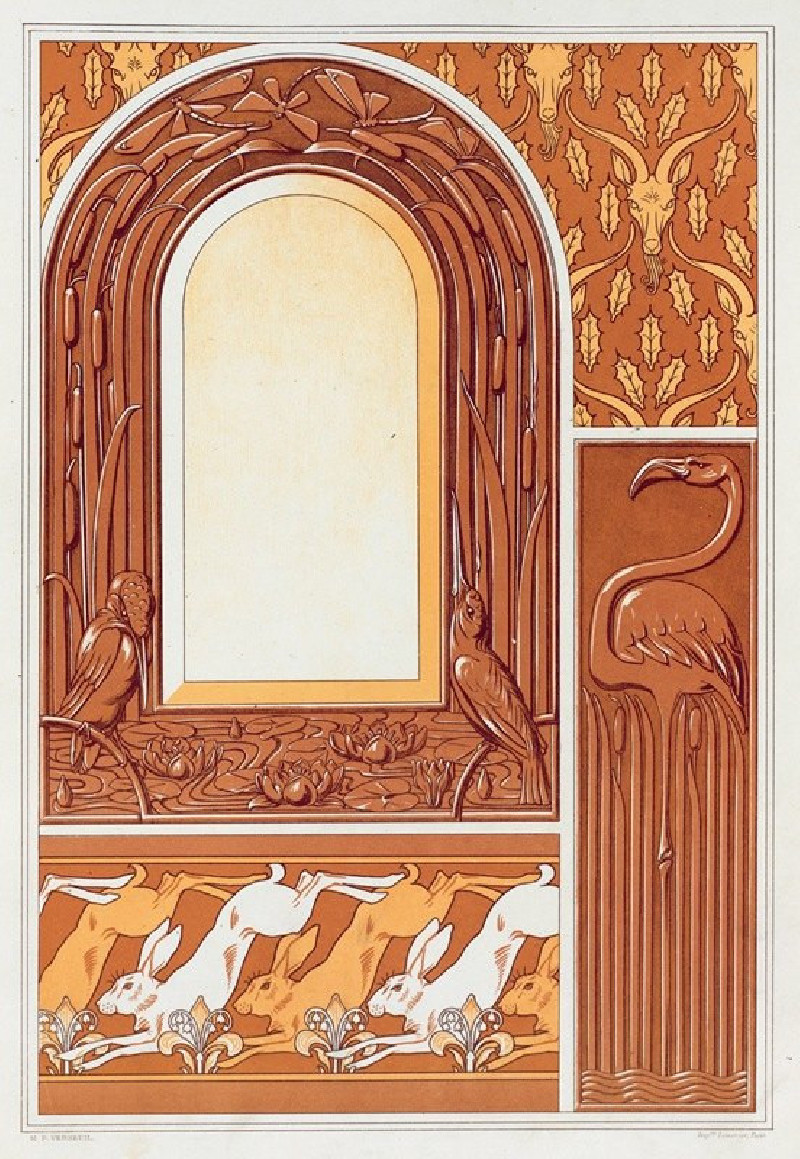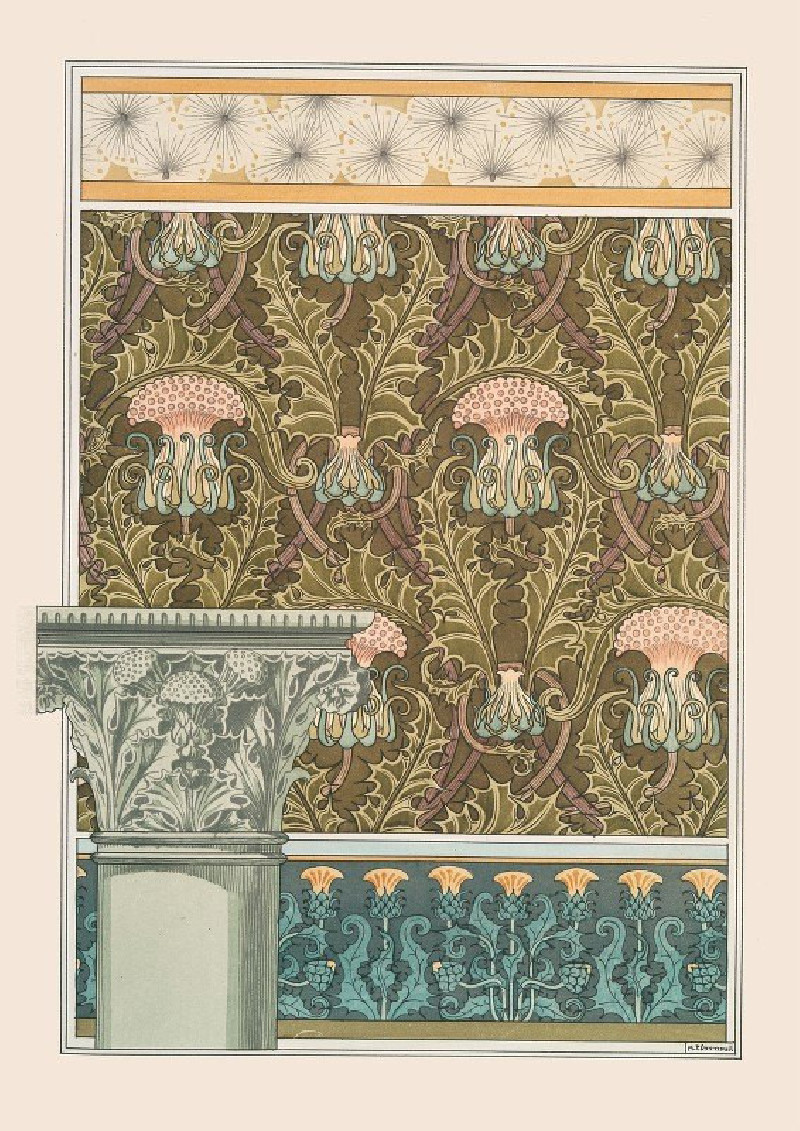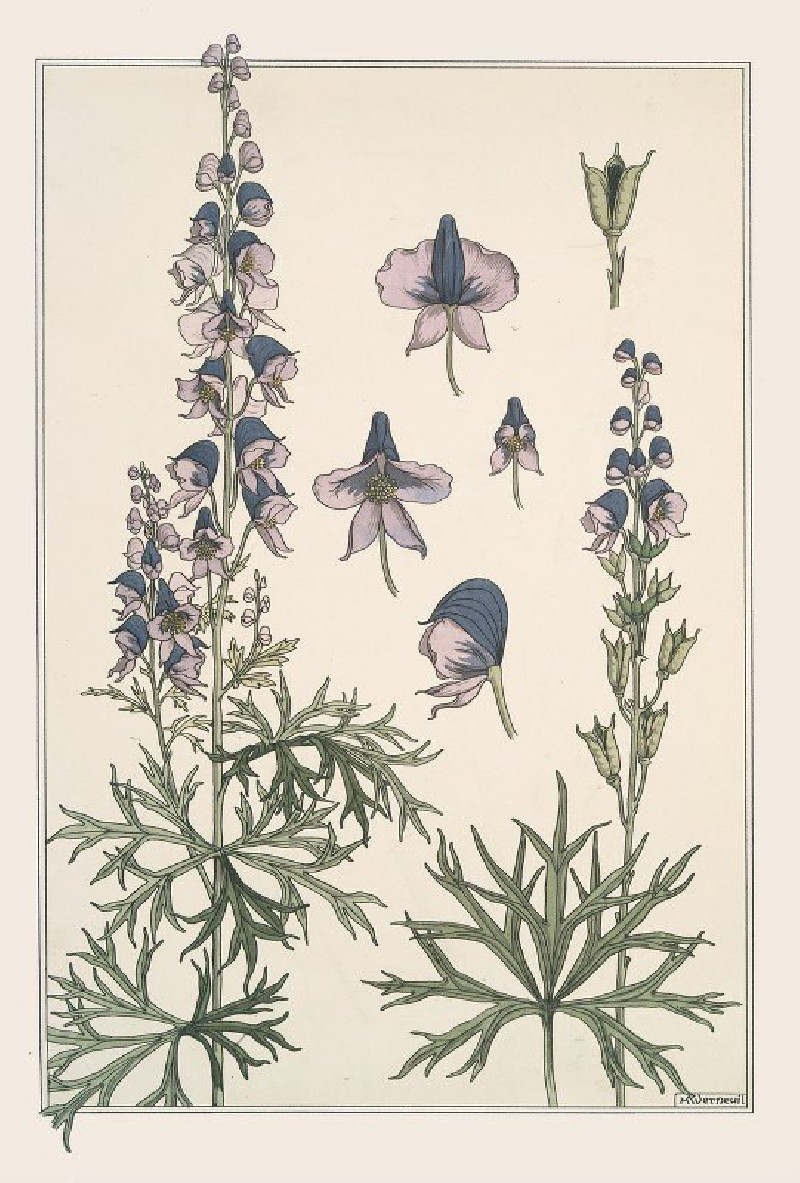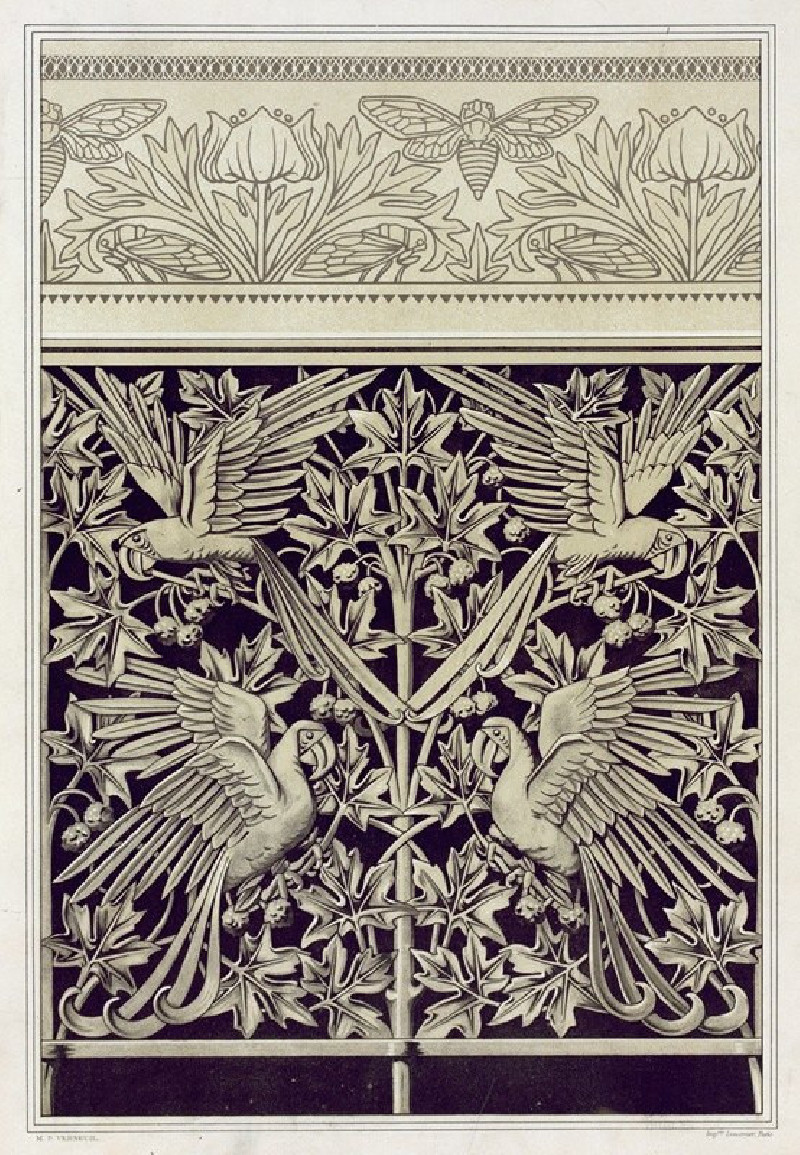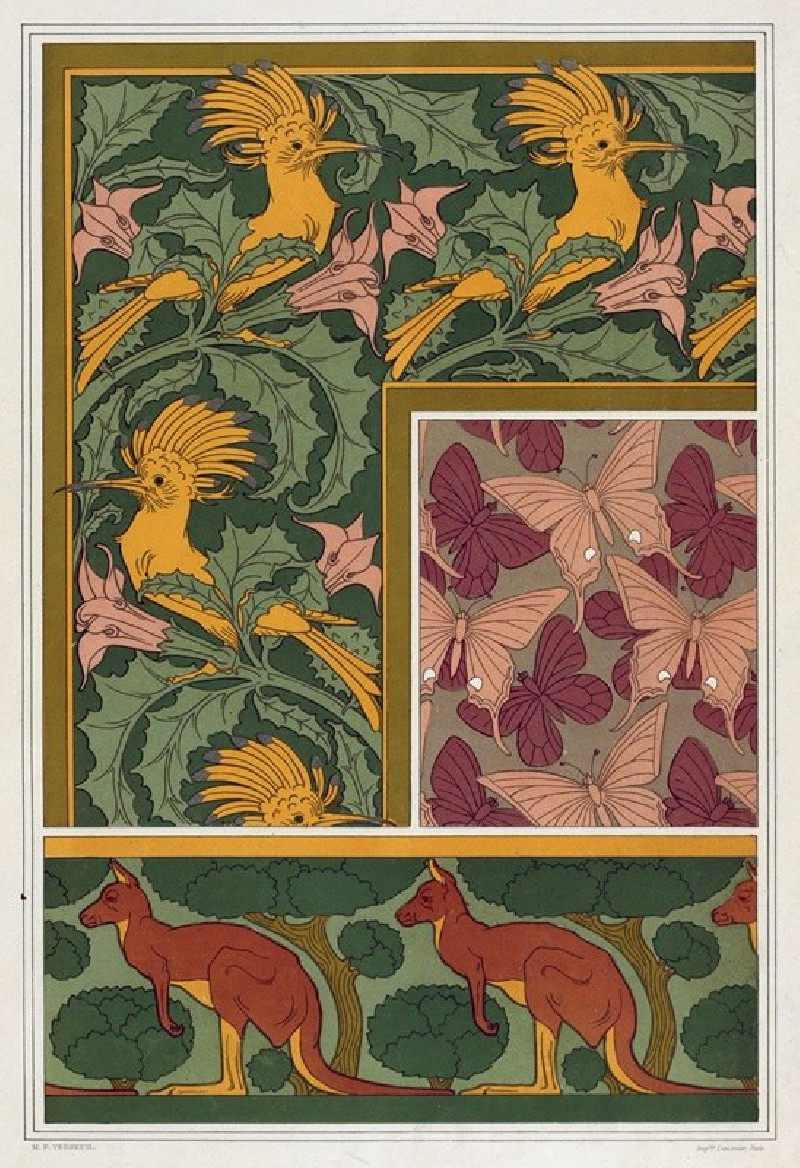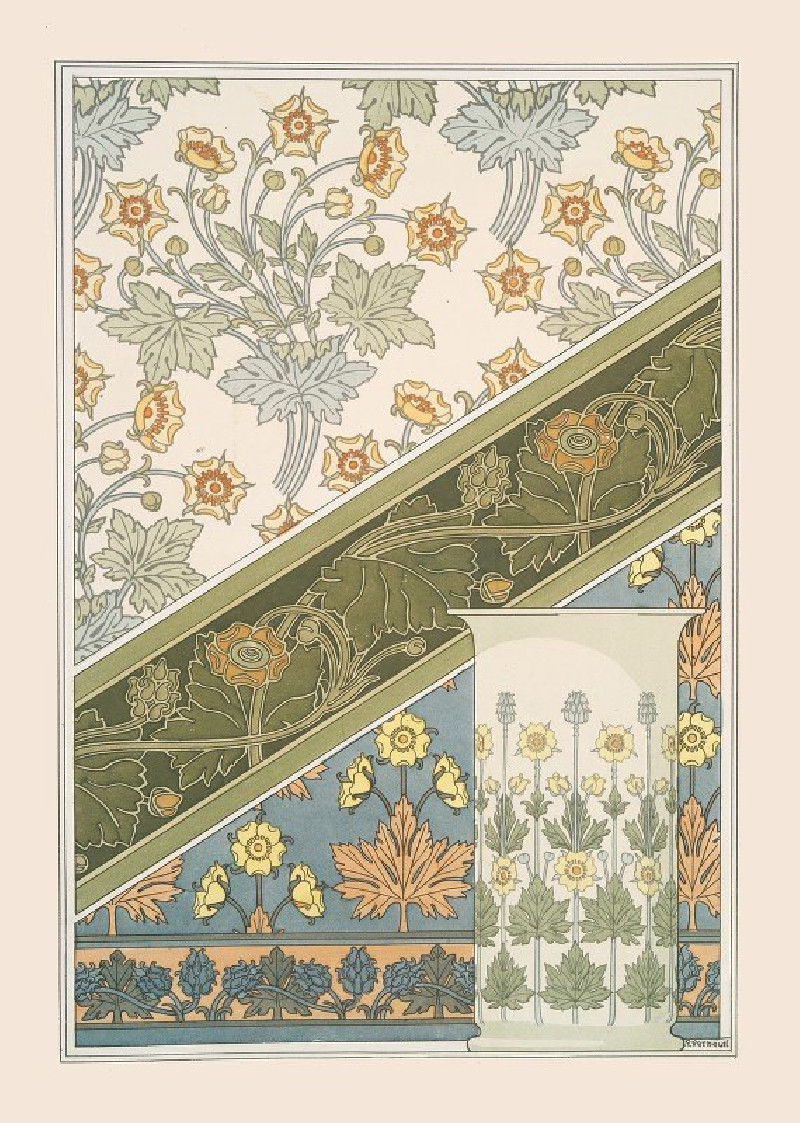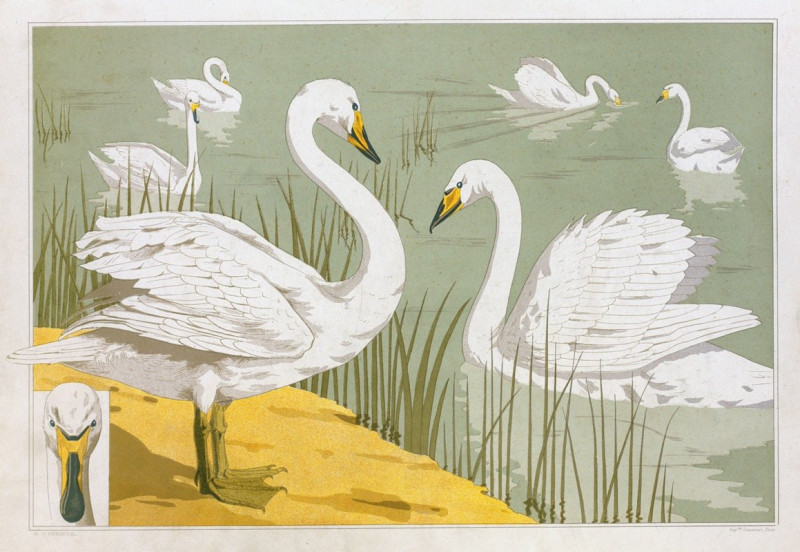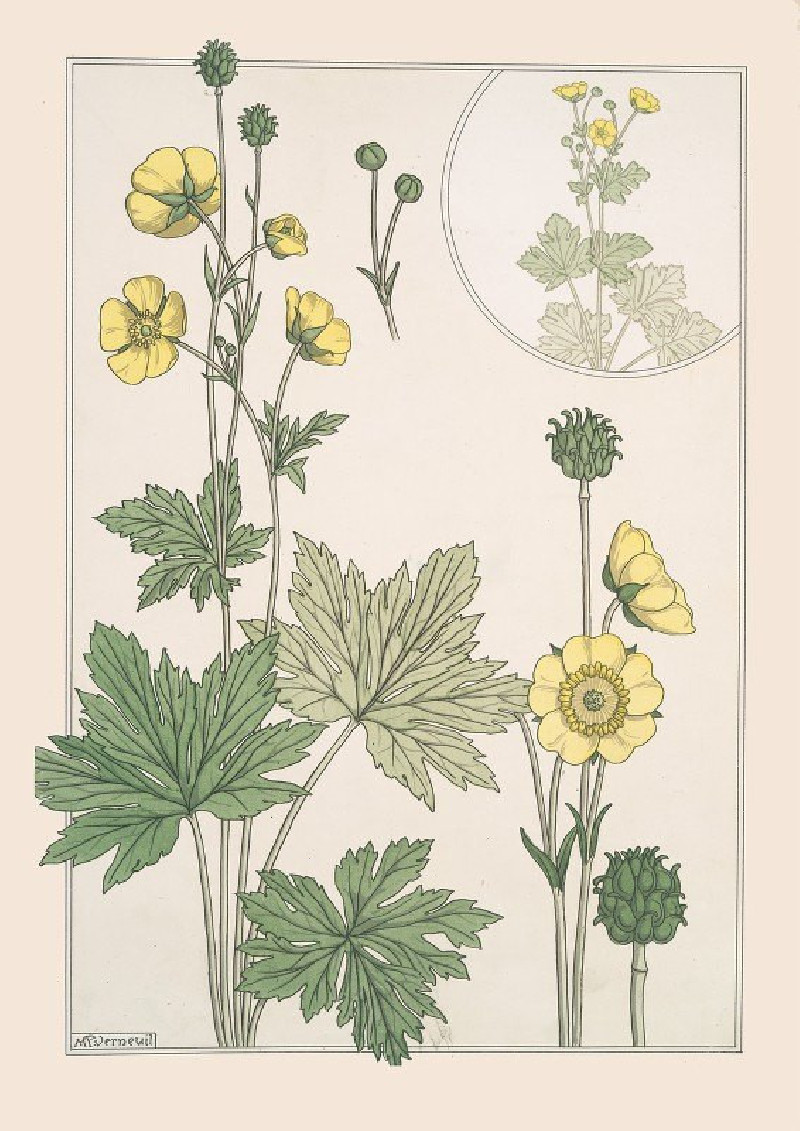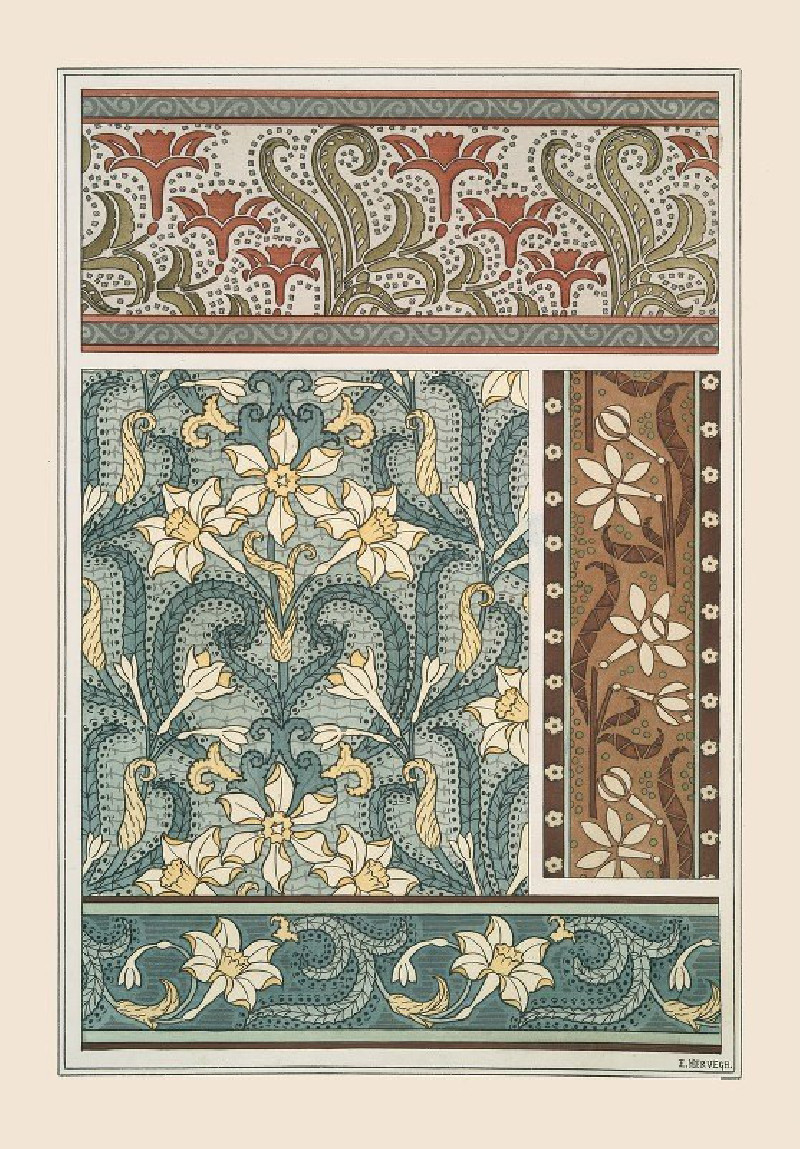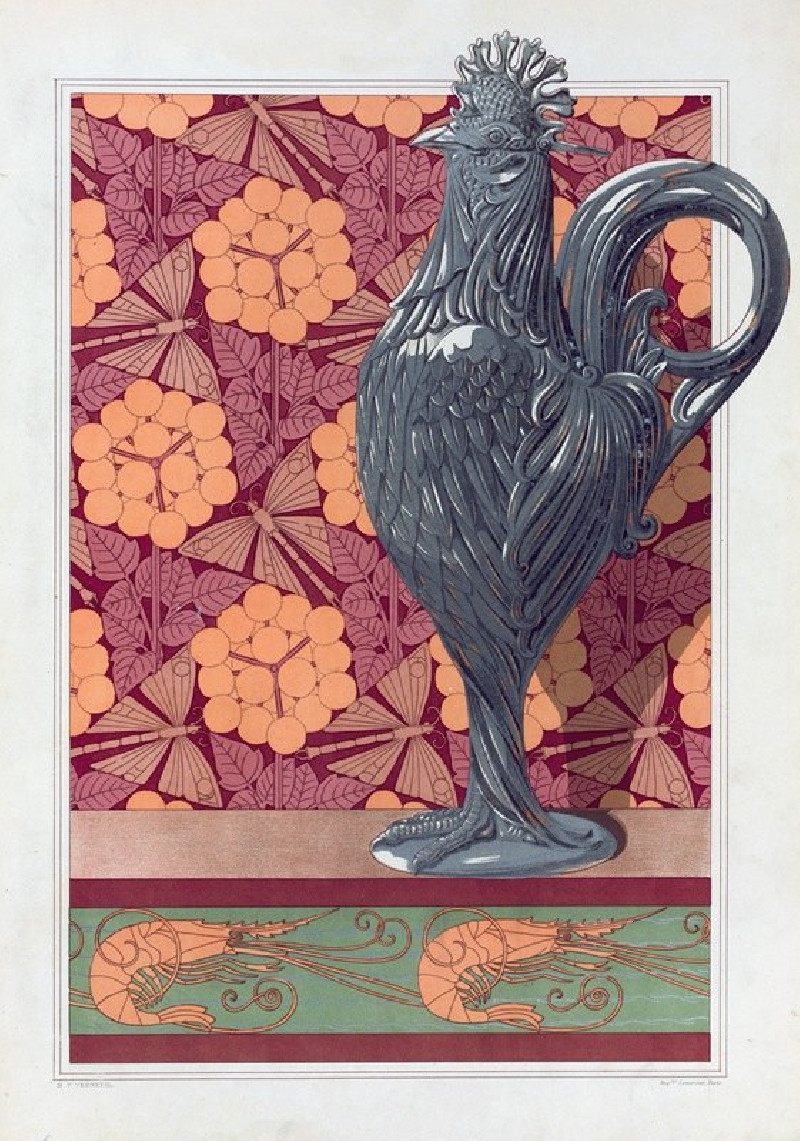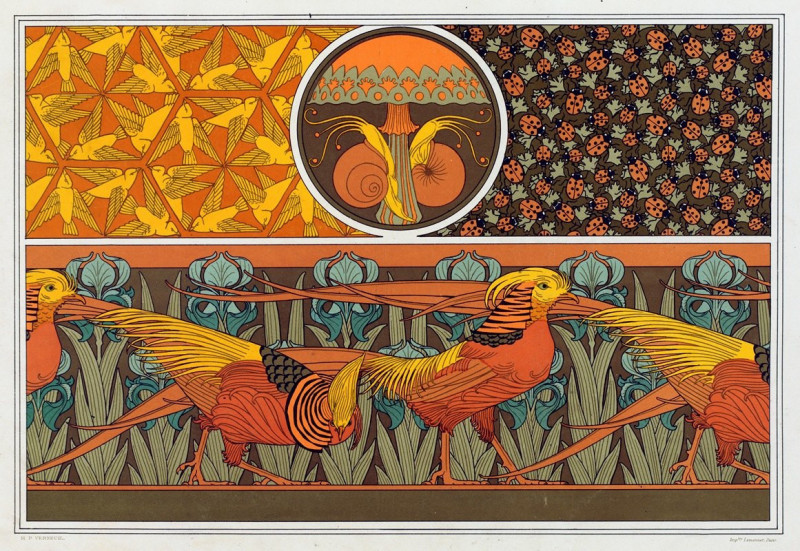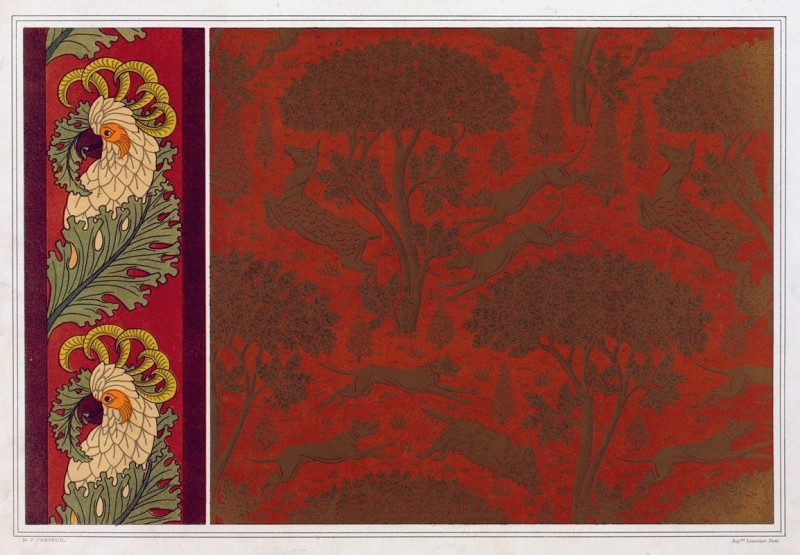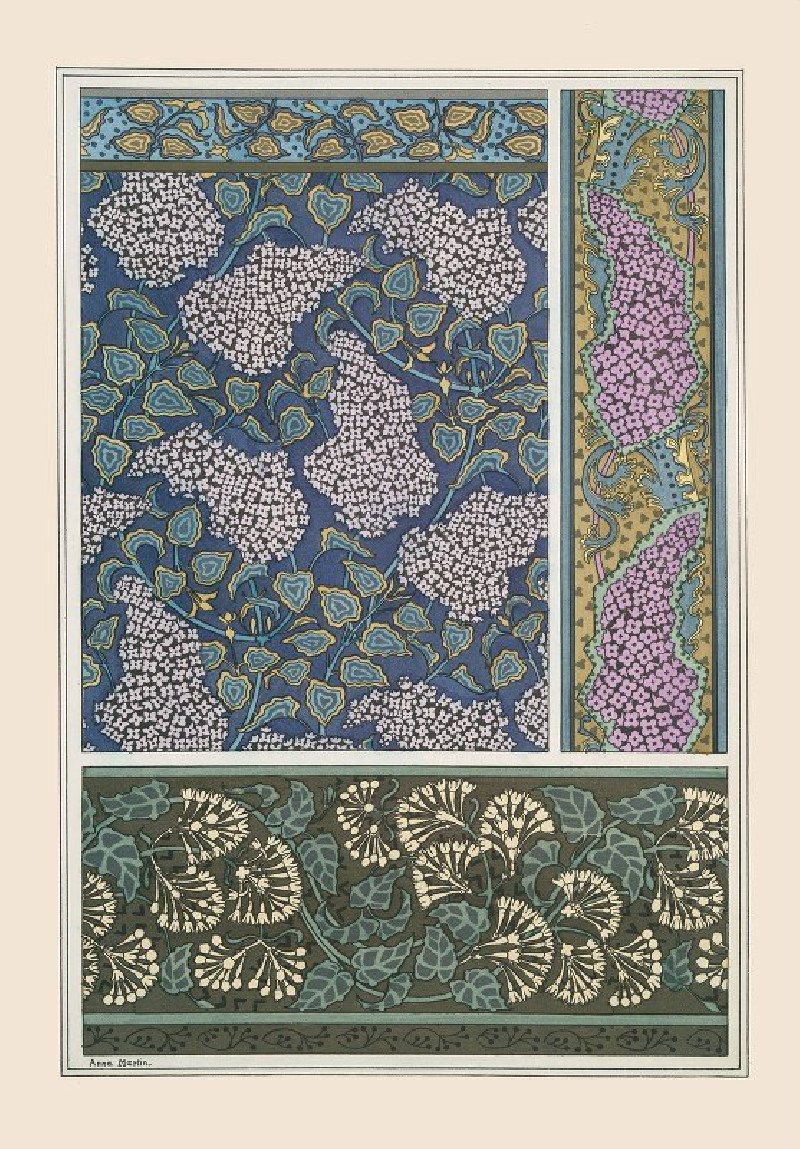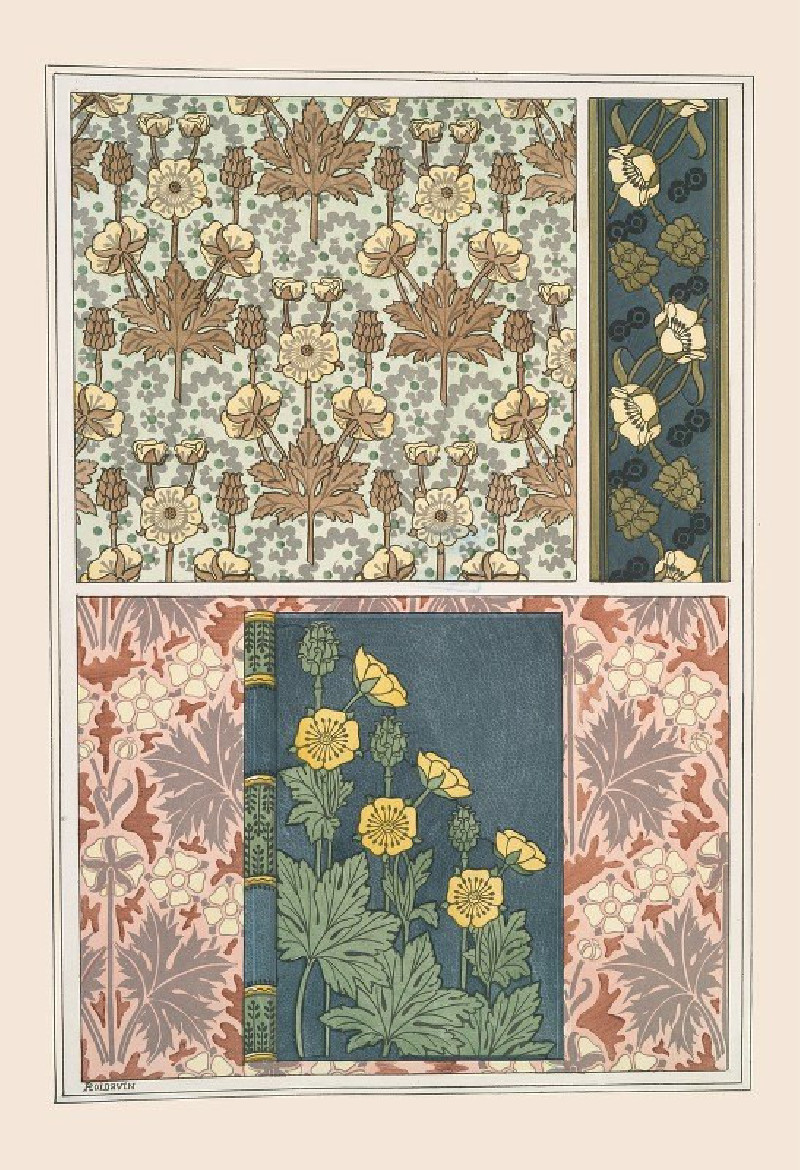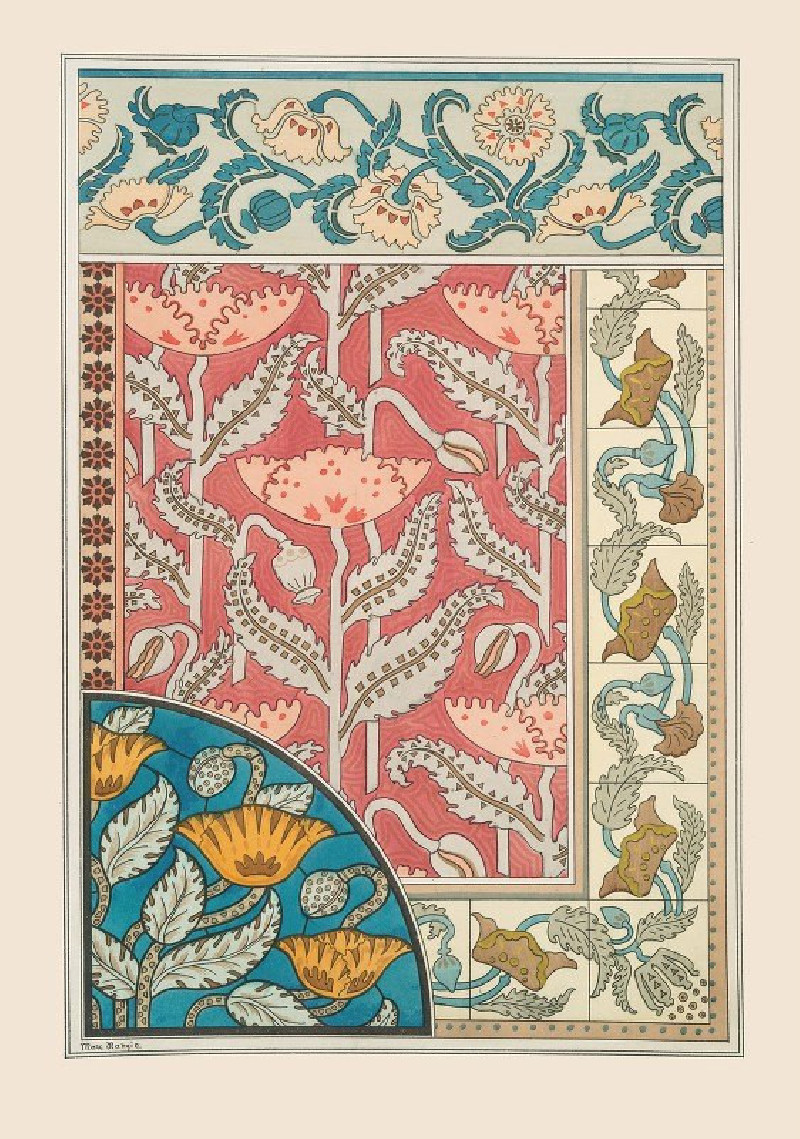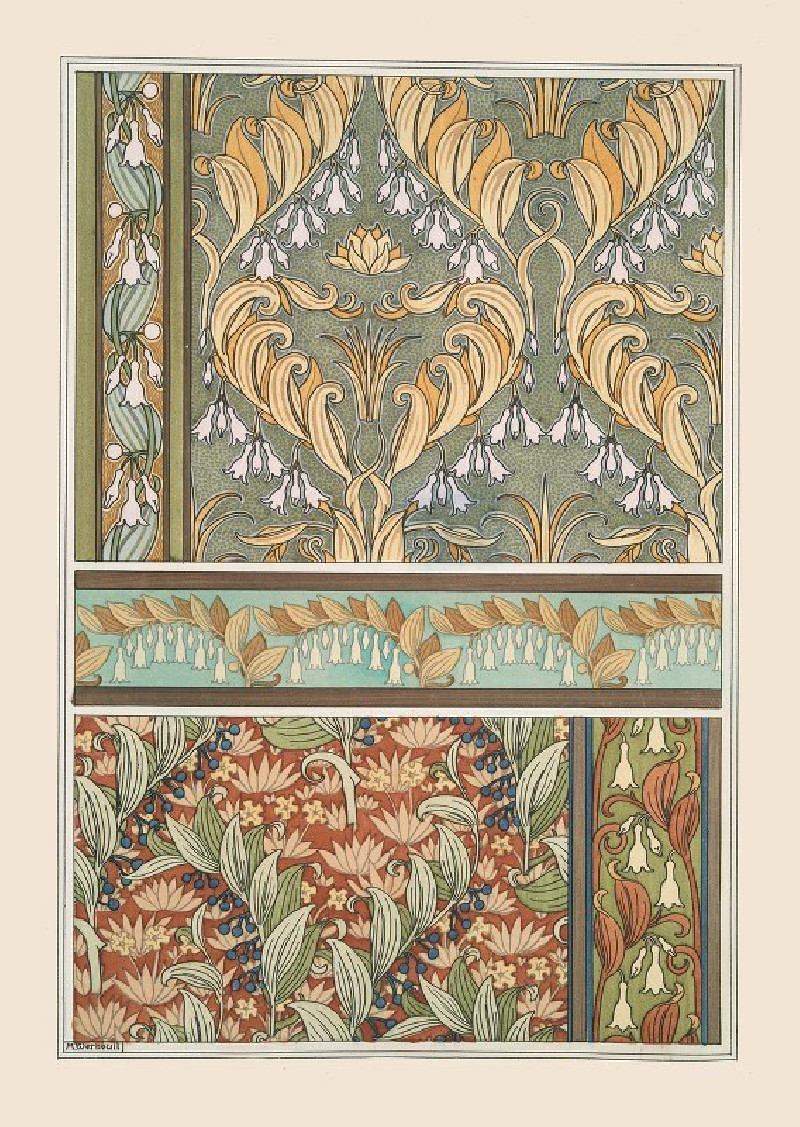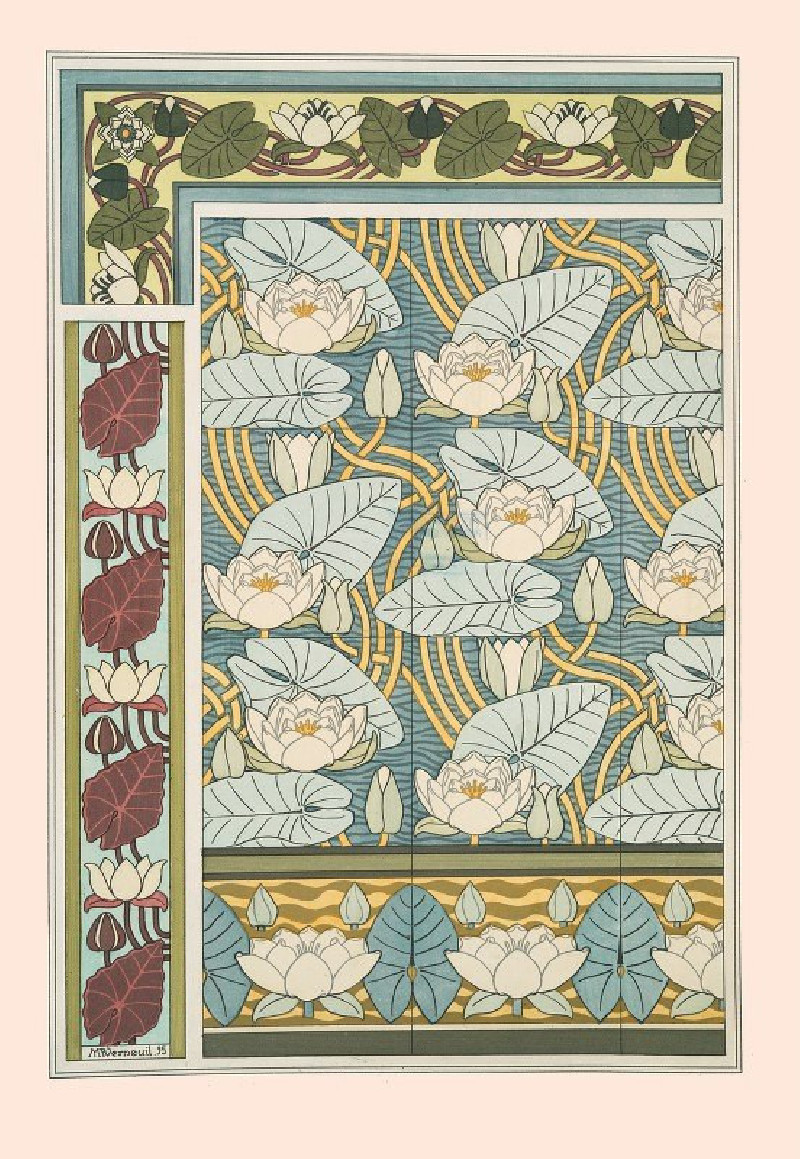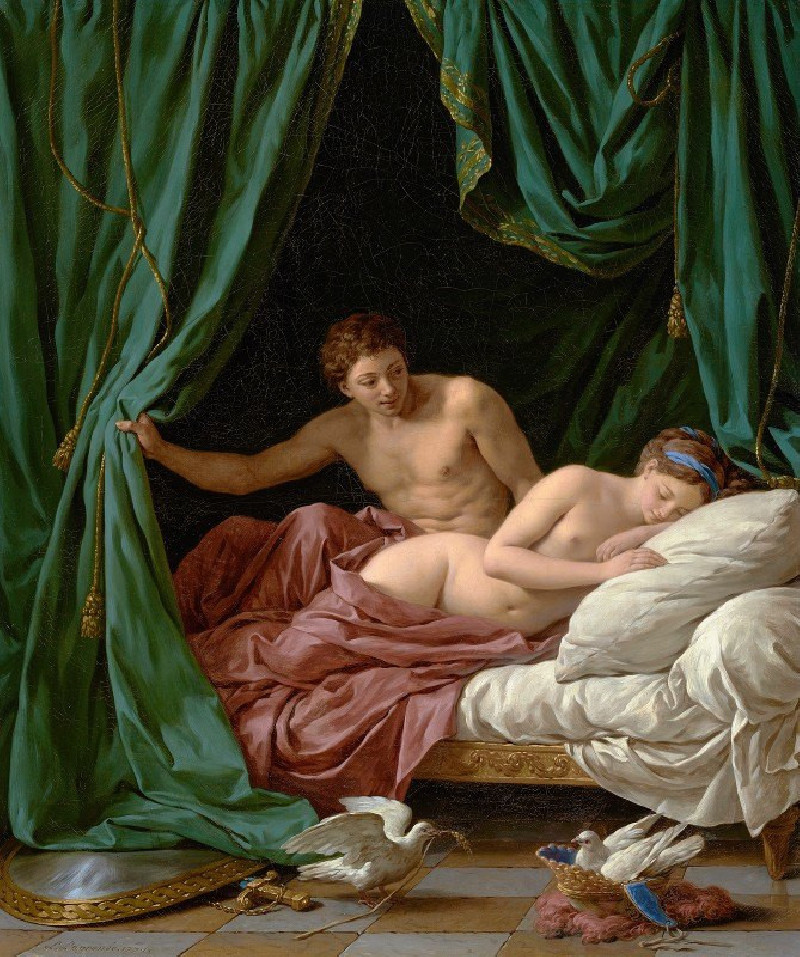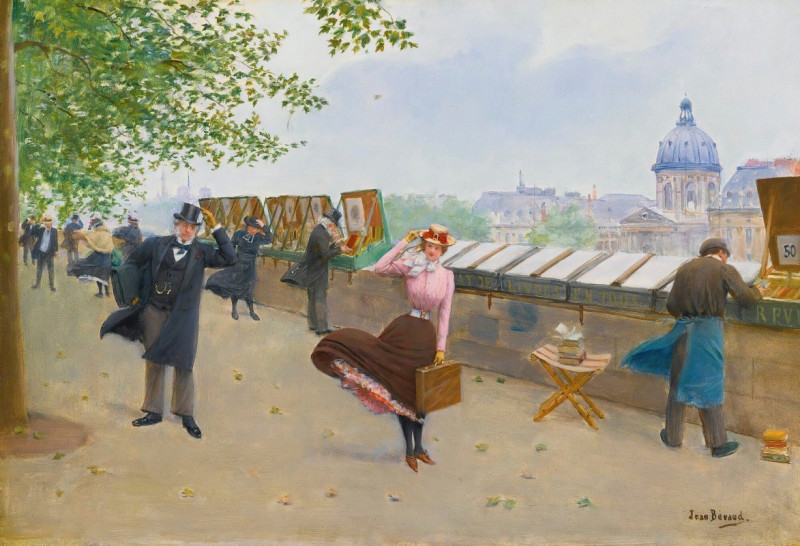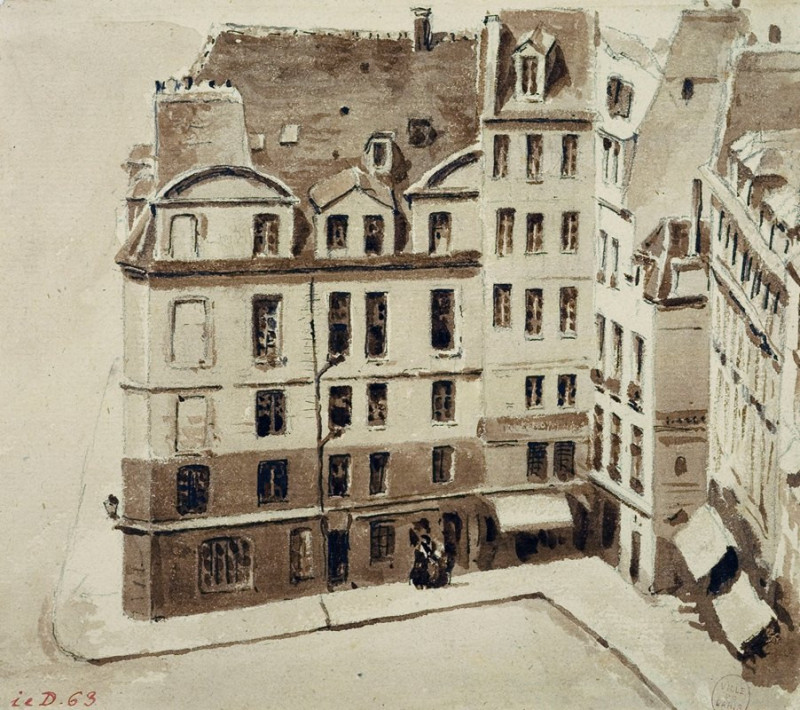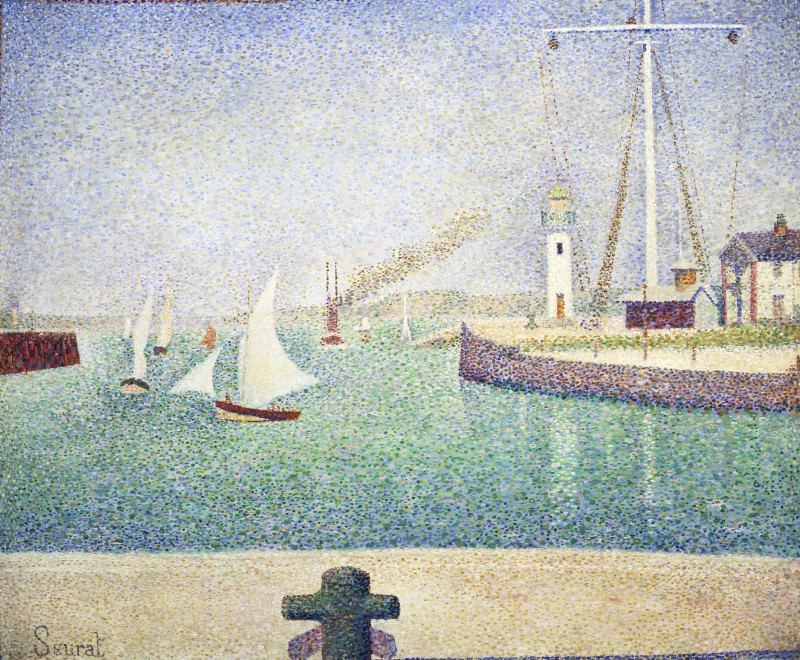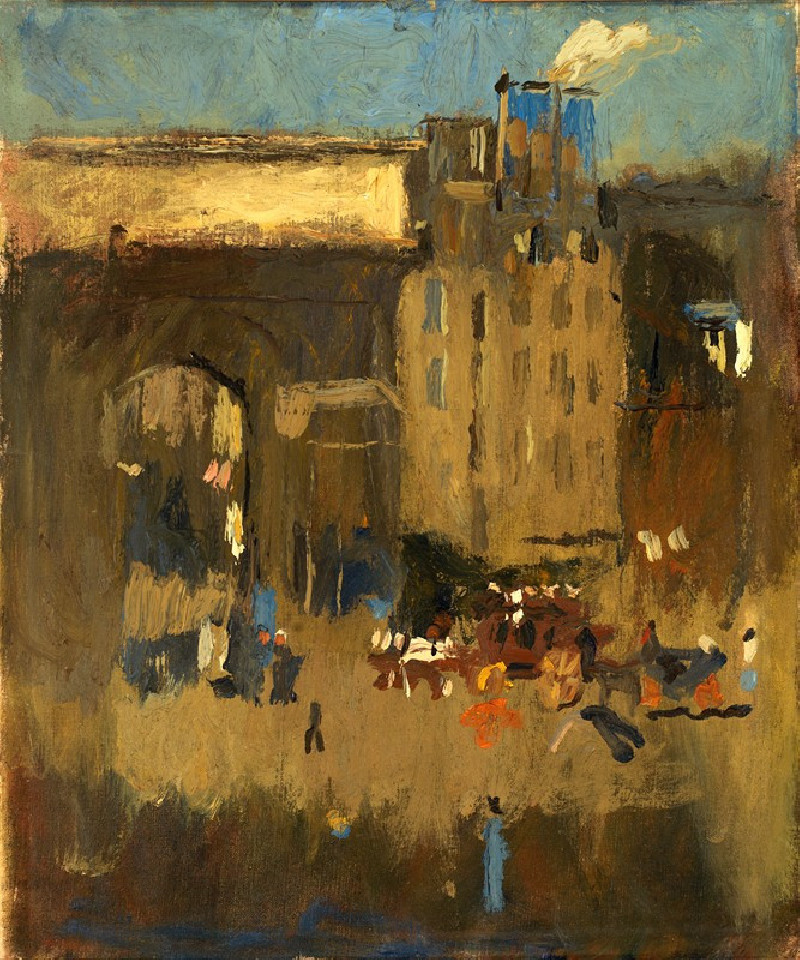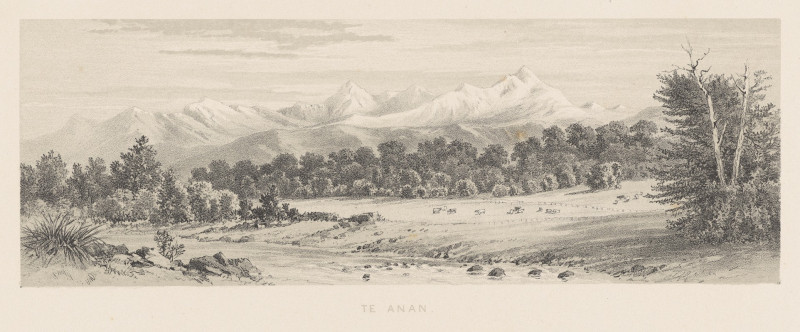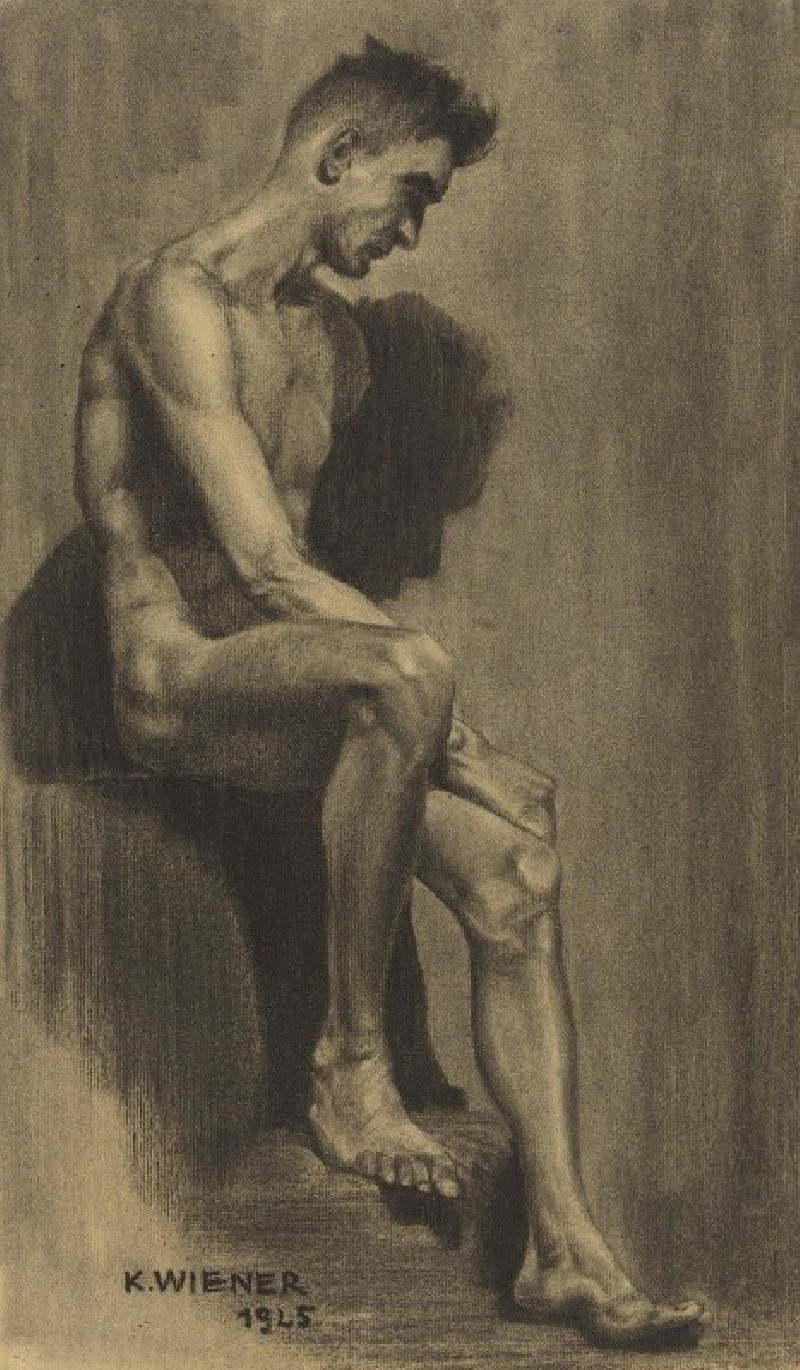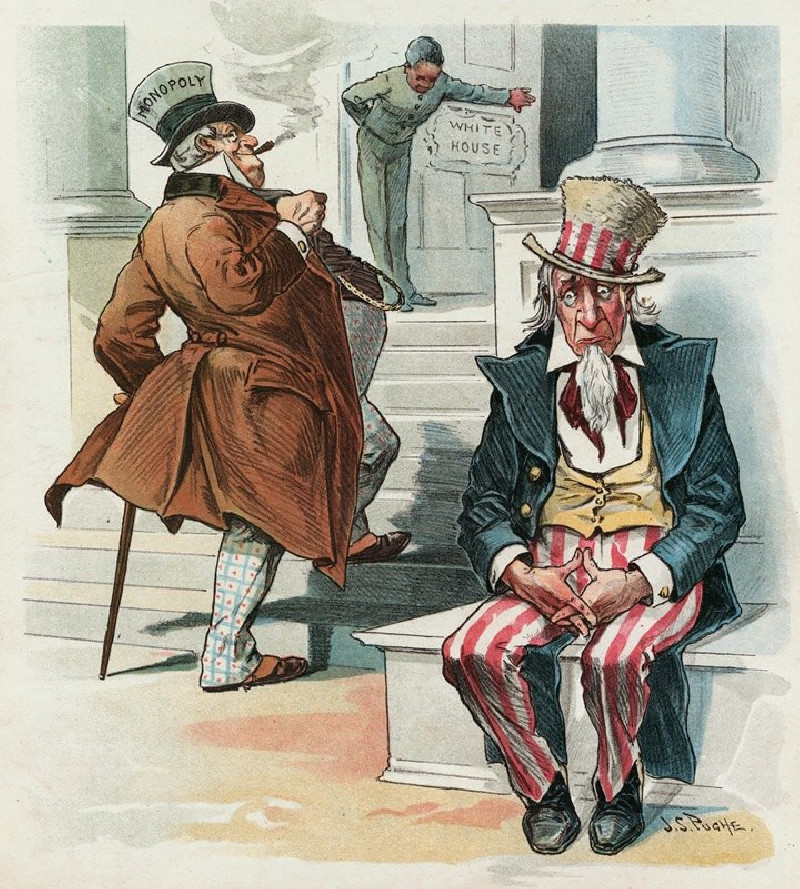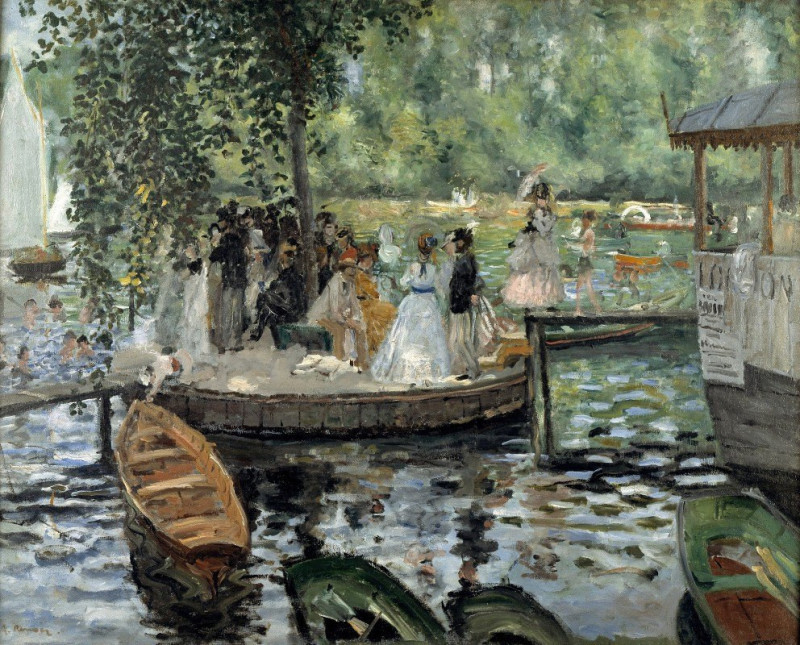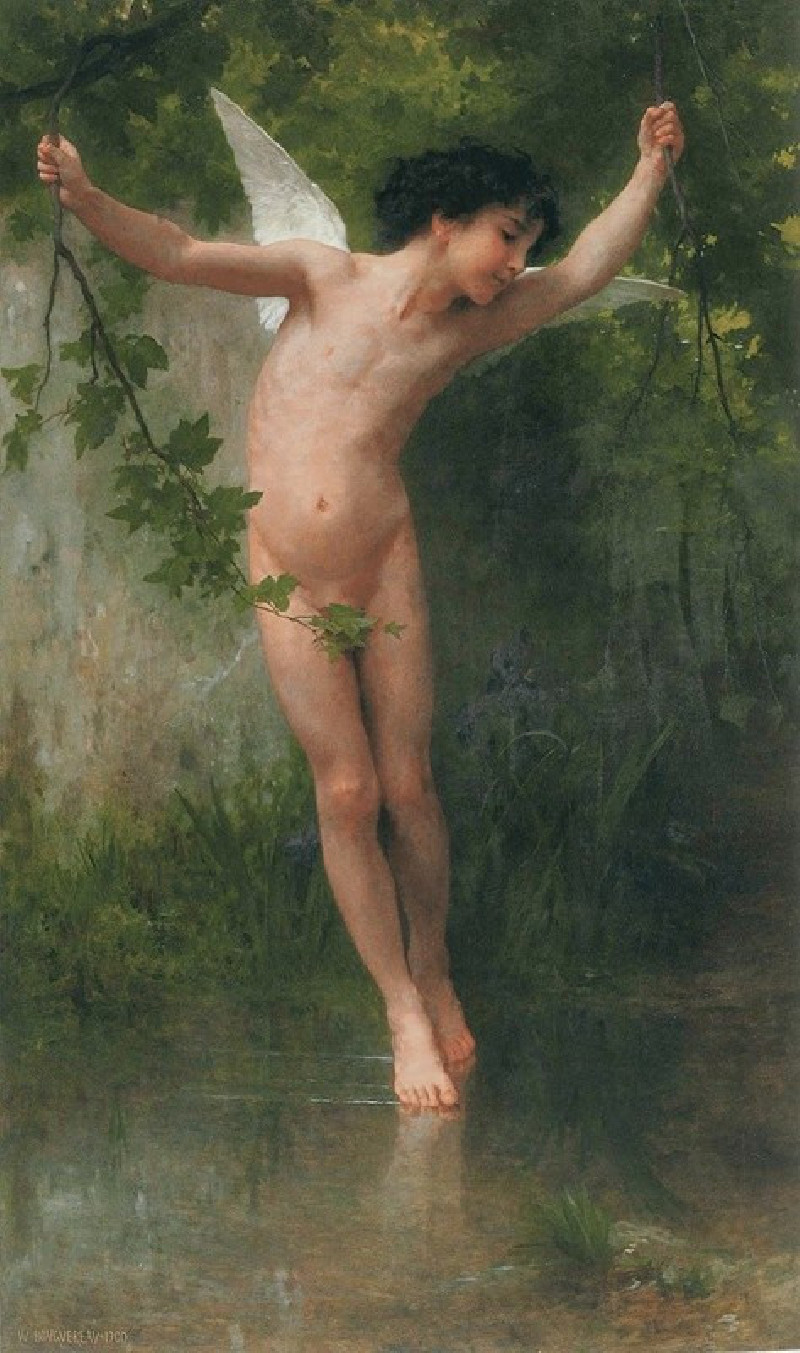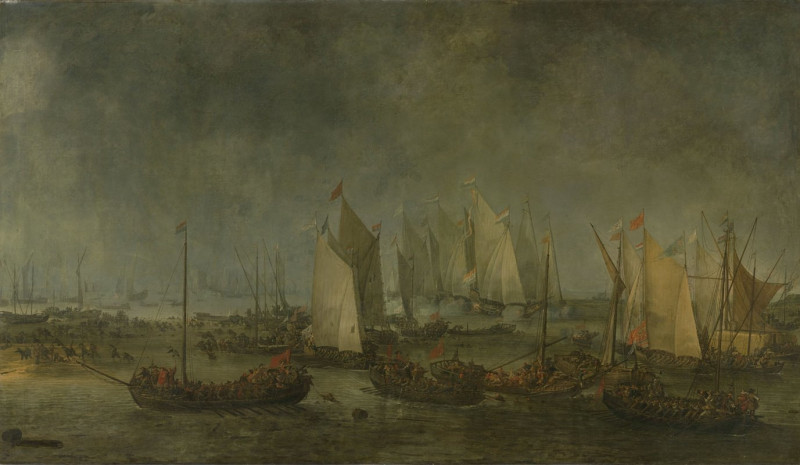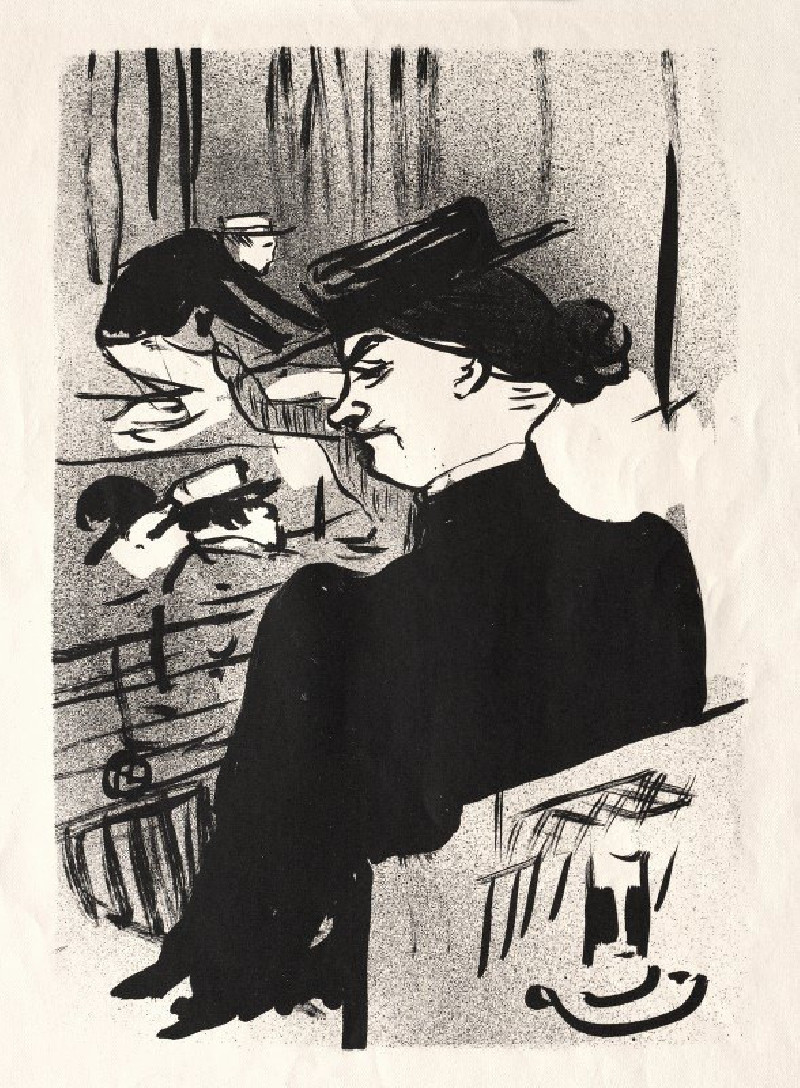Chrysanthème 2 (1896)
Technique: Giclée quality print
Recommended by our customers
More about this artwork
Immerse yourself in the captivating world of Art Nouveau as presented by Maurice Pillard Verneuil in his stunning 1896 creation, "Chrysanthème 2". This artwork is a splendid example of Verneuil's masterful use of floral motifs and organic forms, emblematic of the period's aesthetic which sought to blur the lines between fine and decorative art."Chrysanthème 2" showcases a trio of meticulously designed panels, each offering a unique interpretation of the chrysanthemum, a flower often celebrated for its beauty and symbolic meanings in various cultures. The top panel features a serene sequence of chrysanthemum plants, rendered in muted tones of green and gray, conveying a sense of calm and elegance. This continuity and rhythm in design highlight the natural symmetry and simplicity favored in Art Nouveau.Beneath this, the middle panel bursts with vibrant energy, showing an intricate, dense arrangement of chrysanthemum blooms in shades of yellow, orange, and soft peach. The detailed patterning and luminous colors create a lively and dynamic visual display, inviting viewers to appreciate the natural forms in their most festive and flamboyant manifestations.The composition concludes with a semicircular medallion-like section featuring richly hued chrysanthemums set against a contrasting backdrop. This careful curation of color and form encapsulates the essence of the Art Nouveau movement's enthusiasm for harmonizing art with the natural world.
Delivery
Returns
Maurice Pillard Verneuil was a French artist and decorator in the Art nouveau movement. He was born in Saint-Quentin, France. Maurice Pillard Verneuil learned his trade from the Swiss designer Eugène Grasset. Maurice Pillard Verneuil then went on to become a well-known artist and designer. He was inspired by Japanese art and nature, particularly the sea. He is known for his contribution to the art deco movement and, in particular, his use of bold, floral designs in ceramic tiles, wallpapers and other furnishing textiles.

